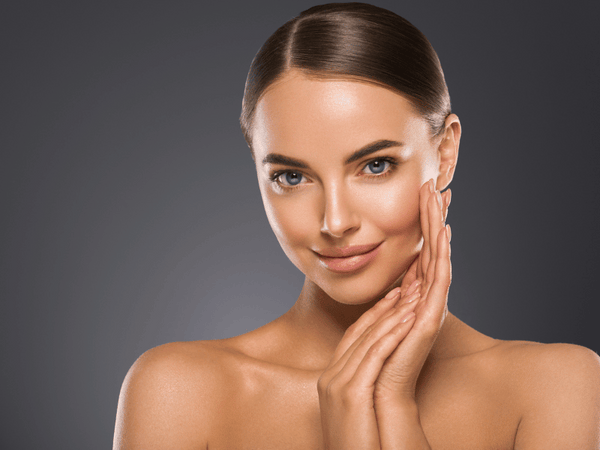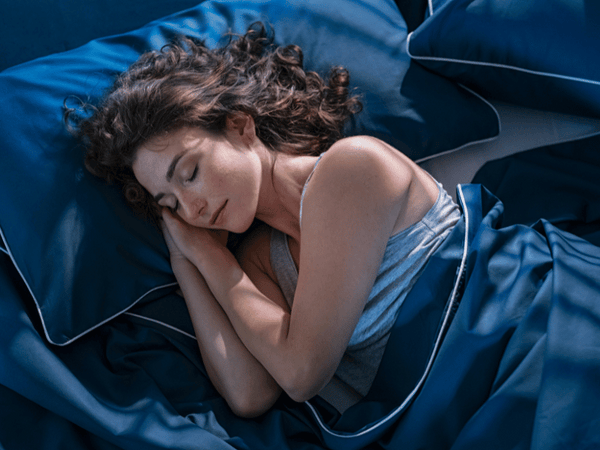
The Role of Red Light Therapy in Weight Loss
The Role of Red Light Therapy in Weight Loss
Red light therapy (RLT) has emerged as a popular method for addressing various health concerns, including weight loss. It involves exposing the body to low levels of red or near-infrared light, which is believed to penetrate the skin and affect the cells beneath. The idea that red light therapy can aid in weight loss is gaining traction, but it's essential to understand how it works and whether it's effective.
In this comprehensive guide, we will delve into the intricacies of red light therapy, exploring its mechanisms and benefits. We'll also examine how it can be integrated with other weight-loss strategies for optimal results. Whether you're curious about the science behind infrared light or considering it as part of your weight loss journey, this article aims to provide all the information you need.
By the end of this post, you will have a thorough understanding of the role of red light treatment in weight loss, its benefits beyond shedding pounds, what to expect during a session, and how to combine it with other methods to achieve your health goals. Let's dive in!
What is Red Light Therapy?
Definition and Mechanism
LED light therapy, also known as photobiomodulation (PBM) or low-level laser therapy (LLLT), is a treatment that uses specific wavelengths of red or near-infrared light to penetrate the skin and stimulate cellular function. The therapy typically involves wavelengths ranging from 620 to 750 nanometers (nm) for red light and 800 to 1,000 nm for near-infrared light.
How It Works:
1. Absorption by Chromophores: When red light penetrates the skin, it is absorbed by chromophores within the cells, particularly in the mitochondria, which are the powerhouses of the cells.
2. Increased ATP Production: This absorption leads to an increase in the production of adenosine triphosphate (ATP), the primary energy carrier in cells. Enhanced ATP production boosts cellular energy, promoting various metabolic processes.
3. Enhanced Cellular Functions: The stimulated cells perform their functions more efficiently, leading to various therapeutic effects such as reduced inflammation, enhanced tissue repair, and increased collagen production.
Benefits of Red Light Therapy Beyond Body Weight Loss
Red light therapy (RLT) is not only gaining popularity for its potential to help with weight loss but also for its numerous other health benefits. These advantages extend to various aspects of physical and mental well-being, making it a versatile therapy. Here, we'll explore three significant benefits of red light therapy beyond weight loss: skin health, pain relief, and mental health.
Skin Health

Improvement in Skin Tone and Texture
One of the most notable benefits of red light therapy is its positive impact on skin health. RLT stimulates collagen production, which is crucial for maintaining skin elasticity and firmness. Collagen, a protein found abundantly in the skin, helps keep the skin looking youthful and smooth.
- Reduction of Fine Lines and Wrinkles: Regular exposure to red light can help diminish the appearance of fine lines and wrinkles. This is achieved by boosting collagen and elastin production, which are essential for maintaining skin structure and elasticity.
- Enhanced Skin Tone and Texture: Red light therapy promotes better blood circulation, which can result in a more even skin tone and improved texture. It helps reduce the appearance of scars, stretch marks, and other skin imperfections.
Healing of Skin Conditions
Red light therapy may be effective in treating various skin conditions. It can help accelerate the healing process of wounds, reduce inflammation, and alleviate symptoms of chronic skin conditions such as psoriasis and eczema.
- Acne Reduction: By reducing inflammation and regulating oil production, RLT can help manage and prevent acne breakouts. It also aids in healing acne scars and reducing redness associated with active acne.
- Psoriasis and Eczema Relief: Red light therapy can help reduce the severity of symptoms in conditions like psoriasis and eczema by decreasing inflammation and promoting skin regeneration.
Pain Relief

Alleviation of Muscle and Joint Pain
Red light therapy is widely recognized for its ability to alleviate pain, particularly muscle and joint pain. It works by penetrating deep into the tissues, reducing inflammation, and promoting healing at the cellular level.
- Reduction of Inflammation: Inflammation is a common cause of chronic pain. RLT helps decrease inflammation by promoting the release of anti-inflammatory cytokines and enhancing cellular repair processes.
- Pain Management in Chronic Conditions: Conditions such as arthritis, fibromyalgia, and tendinitis can benefit from red light therapy. Regular sessions can help reduce pain and improve mobility in affected joints and muscles.
Faster Recovery from Injuries
Athletes and fitness enthusiasts often use red light therapy to speed up recovery from injuries. By enhancing cellular repair and reducing inflammation, RLT can help tissues heal more quickly and effectively.
- Post-Exercise Recovery: After intense physical activity, muscles can become sore and inflamed. Red light therapy can help reduce muscle soreness and accelerate recovery, allowing individuals to return to their training routines sooner.
- Treatment of Soft Tissue Injuries: Injuries such as sprains, strains, and bruises can benefit from red light therapy. It aids in reducing swelling and promoting faster healing of the injured tissues.
Mental Health

Reduction in Stress and Anxiety
Mental health is another area where red light therapy shows promise. Exposure to red light can positively affect mood and overall mental well-being by influencing the brain's chemical balance.
- Mood Enhancement: Red light therapy can stimulate the production of serotonin, a neurotransmitter that plays a key role in mood regulation. Higher levels of serotonin can lead to improved mood and reduced feelings of anxiety and depression.
- Stress Reduction: By promoting relaxation and reducing inflammation, red light therapy can help lower stress levels. This can lead to better mental clarity, reduced anxiety, and an overall sense of well-being.
Improved Sleep Patterns
Quality sleep is essential for overall health, and red light therapy can help improve sleep patterns. The therapy can regulate the production of melatonin, a hormone that controls sleep-wake cycles.
- Better Sleep Quality: Regular use of red light therapy can help individuals fall asleep faster and enjoy deeper, more restorative sleep. This is particularly beneficial for those suffering from sleep disorders such as insomnia.
- Enhanced Daytime Alertness: Improved sleep quality leads to better daytime alertness and cognitive function, helping individuals feel more energetic and focused throughout the day.
Table: Benefits of Red Light Therapy
| Benefit | Specific Effects | Additional Notes |
|---|---|---|
| Skin Health | Improved tone and texture, reduced wrinkles, acne reduction, healing of skin conditions | Boosts collagen production, enhances blood circulation |
| Pain Relief | Alleviates muscle and joint pain, faster injury recovery | Reduces inflammation, promotes cellular repair |
| Mental Health | Reduces stress and anxiety, improves sleep patterns | Influences serotonin and melatonin production |
Combining Red Light Therapy with Other Weight Loss Methods
While red light therapy (RLT) can be a powerful tool in the weight loss journey, its effectiveness can be significantly enhanced when combined with other weight loss methods. A holistic approach that includes diet and exercise along with lifestyle changes can optimize results and promote overall health. In this section, we will explore how to integrate red light therapy with these essential components of a healthy weight loss plan.
Diet and Nutrition

Importance of a Balanced Diet
A balanced diet is crucial for weight loss and overall health. While red light therapy can help reduce body fat cells and boost metabolism, the body needs proper nutrition to function optimally and sustain weight loss. Here are key dietary components to focus on:
- Macronutrients: Ensure a balanced intake of carbohydrates, proteins, and fats. Each macronutrient plays a vital role in energy production, muscle repair, and hormone regulation.
- Micronutrients: Vitamins and minerals are essential for various bodily functions, including metabolism and immune support. Incorporate a variety of fruits, vegetables, and whole grains to meet micronutrient needs.
- Hydration: Drinking adequate water is vital for metabolism and overall health. Proper hydration helps flush out toxins and supports cellular functions enhanced by red light therapy.
Recommended Foods to Enhance Weight Loss
Certain foods can complement the effects of red light therapy by promoting stubborn fat loss and boosting metabolism. Consider incorporating the following into your diet:
- Lean Proteins: Chicken, turkey, fish, tofu, and legumes help build muscle and keep you full longer, reducing the likelihood of overeating.
- Whole Grains: Brown rice, quinoa, oats, and whole wheat products provide sustained energy and support digestive health.
- Healthy Fats: Avocados, nuts, seeds, and olive oil are sources of healthy fats that promote satiety and support overall health.
- Fiber-Rich Foods: Fruits, vegetables, and legumes are high in fiber, which aids digestion and helps control appetite.
Exercise

Types of Exercises that Complement Red Light Therapy
Physical activity is essential for weight loss and can significantly enhance the benefits of red light therapy. Engaging in regular exercise helps burn calories, build muscle, and improve overall fitness. Here are some effective types of exercise to consider:
- Cardiovascular Exercises: Activities such as running, cycling, swimming, and brisk walking increase heart rate and burn calories. Aim for at least 150 minutes of moderate aerobic activity or 75 minutes of vigorous activity per week.
- Strength Training: Weight lifting, resistance band exercises, and bodyweight workouts help build muscle mass, which can increase metabolism and aid in fat loss. Include strength training exercises at least two days a week.
- High-Intensity Interval Training (HIIT): HIIT workouts involve short bursts of intense exercise followed by rest or low-intensity periods. These workouts are efficient and effective for burning calories and improving cardiovascular health.
Tips for Integrating Exercise into Your Routine
- Start Slow: If you are new to exercise, start with low-impact activities and gradually increase intensity and duration.
- Set Realistic Goals: Establish achievable fitness goals to stay motivated and track progress.
- Find Enjoyable Activities: Choose exercises you enjoy to make staying active more enjoyable and sustainable.
- Consistency is Key: Regular physical activity is essential for sustained weight loss and overall health. Aim to incorporate some form of exercise into your daily routine.
Lifestyle Changes

Importance of Sleep and Stress Management
Quality sleep and effective stress management are often overlooked but are crucial components of a successful weight loss plan. Both factors significantly influence metabolism, hormone regulation, and overall well-being.
- Sleep: Aim for 7-9 hours of sleep per night. Lack of sleep can lead to increased hunger and cravings, reduced motivation to exercise, and higher levels of the stress hormone cortisol, which can contribute to weight gain.
- Stress Management: Chronic stress can negatively impact weight loss efforts by increasing cortisol levels and promoting fat storage, particularly around the abdomen. Practice stress-reducing activities such as yoga, meditation, deep breathing exercises, and hobbies that bring you joy.
Creating a Sustainable Weight Loss Plan
To achieve long-term success in weight loss, it is essential to adopt sustainable habits that can be maintained over time. Here are some tips to help you create a lasting weight loss plan:
- Set Realistic Goals: Focus on achievable, short-term goals that lead to long-term success. Celebrate small victories along the way to stay motivated.
- Monitor Progress: Keep track of your weight loss journey by logging your diet, exercise, and any changes in measurements or how your clothes fit.
- Stay Accountable: Partner with a friend, join a support group, or seek guidance from a health professional to stay accountable and motivated.
- Be Flexible: Understand that setbacks are a natural part of the journey. Be flexible and adapt your plan as needed to overcome challenges and continue progressing.
Table: Integrating Red Light Therapy with Weight Loss Methods
| Weight Loss Method | Benefits | How to Integrate with RLT |
|---|
| Diet and Nutrition | Provides essential nutrients, supports metabolism, and promotes satiety | Follow a balanced diet with lean proteins, whole grains, healthy fats, and fiber-rich foods |
| Exercise | Burns calories, builds muscle, improves cardiovascular health | Engage in regular cardiovascular, strength training, and HIIT exercises |
| Lifestyle Changes | Enhances sleep quality, reduces stress, supports overall well-being | Prioritize quality sleep, practice stress management techniques, and create a sustainable weight loss plan |
Frequently Asked Questions
Red light therapy is becoming increasingly popular as a weight loss method, but many people still have questions about its effectiveness, safety, and usage. In this section, we address some of the most frequently asked questions to help you better understand how red light therapy can be a valuable part of your weight loss journey.
Common Queries
How long does it take to see results with red light therapy for weight loss?
The time it takes to see results from red light therapy can vary depending on several factors, including the individual's starting point, frequency of treatments, and combination with other weight loss methods. Generally, some people may start noticing changes within a few weeks, while others might take a couple of months. It's important to maintain a consistent treatment schedule and combine it with a healthy diet and regular exercise for optimal results.
Can red light therapy be used for targeted fat loss?
Red light therapy can help reduce fat in targeted areas by penetrating the skin and affecting the fat cells beneath. While it is not a miracle solution for spot reduction, consistent use of red light therapy on specific areas combined with overall weight loss efforts can help achieve more toned and defined results in those areas.
Is red light therapy suitable for everyone?
Red light therapy is generally considered safe for most people. However, it may not be suitable for individuals with certain medical conditions or those who are pregnant. It's always recommended to consult with a healthcare provider before starting any new treatment, including red light therapy, to ensure it is appropriate for your specific health needs.
How often should I use red light therapy for weight loss?
The frequency of red light therapy sessions can vary based on individual goals and the specific device used. Typically, sessions range from three to five times per week, with each session lasting between 10 to 20 minutes. It's important to follow the manufacturer's guidelines and any recommendations provided by a healthcare professional.
Troubleshooting Issues
What should I do if I don’t see results?
If you are not seeing results from red light therapy, consider the following steps:
- Reevaluate Your Routine: Ensure you are following the recommended treatment schedule and combining it with a balanced diet and regular exercise.
- Check Device Specifications: Verify that your red light therapy device meets the necessary wavelength and intensity requirements for effective treatment.
- Consult a professional: Seek advice from a healthcare provider or a specialist in red light therapy to identify any potential issues and make necessary adjustments to your regimen.
How can I optimize my red light therapy sessions?
To maximize the benefits of red light therapy for weight loss, consider these tips:
- Consistency: Maintain a regular treatment schedule to ensure cumulative effects.
- Hydration: Drink plenty of water before and after sessions to support cellular function and detoxification.
- Proper Nutrition: Follow a healthy diet to provide your body with the necessary nutrients for optimal results.
- Rest and Recovery: Ensure you get adequate sleep and manage stress to support overall health and weight loss efforts.
Table: Frequently Asked Questions about Red Light Therapy
| Question | Answer |
|---|
| How long does it take to see results? | Results vary; some may notice changes in a few weeks, others in a couple of months. |
| Can red light therapy be used for targeted fat loss? | Yes, it can help reduce fat in specific areas when combined with overall weight loss efforts. |
| Is red light therapy suitable for everyone? | Generally safe, but consult a healthcare provider, especially if you have medical conditions or are pregnant. |
| How often should I use red light therapy? | Typically 3-5 times per week, 10-20 minutes per session, following device and professional guidelines. |
| What if I don’t see results? | Reevaluate your routine, check device specs, and consult a professional for advice. |
| How can I optimize my sessions? | Maintain consistency, stay hydrated, eat a healthy diet, and ensure proper rest and stress management. |
Conclusion
Red light therapy (RLT) is a promising tool for weight loss, offering a non-invasive, scientifically-backed method to reduce fat and enhance overall health. Throughout this guide, we've explored its mechanisms, additional benefits like improved skin health and pain relief, and the importance of combining it with diet, exercise, and lifestyle changes.
Approach RLT with realistic expectations and a commitment to overall health. Consult with a healthcare provider before starting to ensure it's right for you. By integrating RLT with other healthy habits, you can achieve optimal weight loss and improve your quality of life.
Thank you for reading. We hope this guide has been informative and helpful. For further information and personalized advice, consult a healthcare professional or an RLT specialist.
